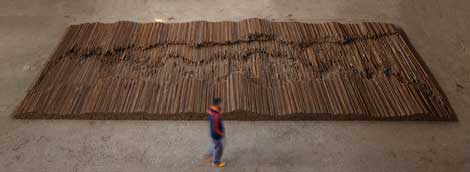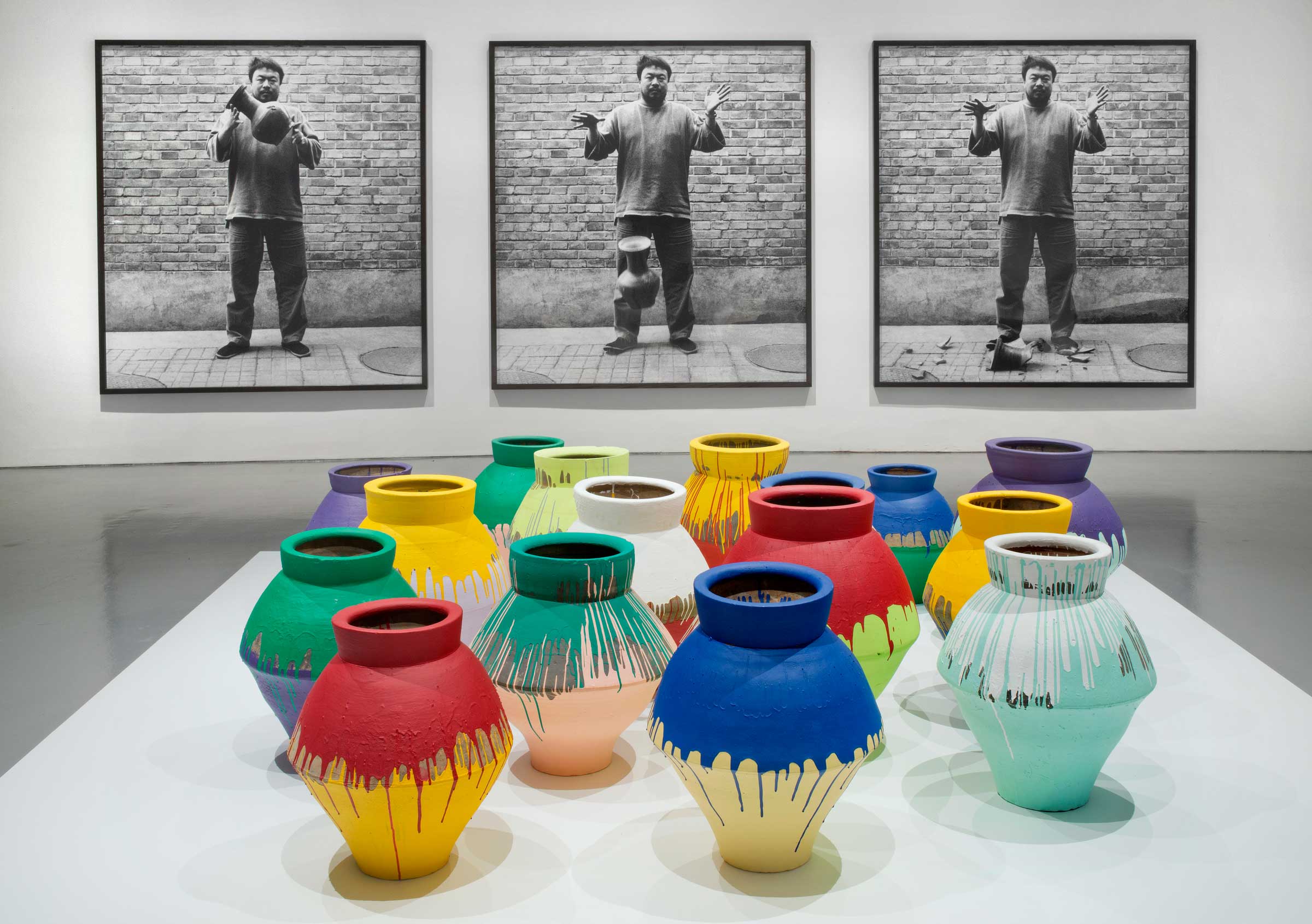“Ai Weiwei: According to What?” at the Brooklyn Museum opens the parameters for making and defining art by referencing contemporary China and the artist’s struggles as a political dissident.
Ai’s relentless tweets, blogs, and photographic chronicling are an ongoing performance the artist mines for his creative process. Never before has anyone documented his life with such constant urgency and used that material to generate art. Performance in this context takes on a highly nuanced political significance; every action becomes performative when it is rarified as it is here, through Ai’s artistic lens.
Perhaps the best instances of such documentation are the six dioramas titled S.A.C.R.E.D. (2011-13) of Ai’s 81-day incarceration in China for criticizing the government. The letters stand for each diorama’s subtitle—Supper, Accusers, Cleansing, Ritual, Entropy, and Doubt—that highlight the action in each cell. Placed in metal containers in the lobby of the Museum, the viewer is able to see the characters only by peeking through a small window or standing on a stool to peer through a similar opening at the top of the structure. Ai simulates a surreptitious activity and engages us as voyeurs into a period of his life that was secluded from public scrutiny.

Ai Weiwei (Chinese, b. 1957). R itual (detail), 2011-2013. From the work S.A.C.R.E.D., 2011‒13. One of six dioramas in fiberglass and iron, 148 3/8 x 78 x 60 1/5 in. (377 x 198 x 153 cm). Courtesy of Ai Weiwei Studio. © Ai Weiwei
The irony of looking into the clandestine operations of the Chinese government is not lost on the viewer. But what makes this replay of his daily life in prison into art is the amplified effect of the miniature figures. Ostensibly charged for tax evasion, Ai’s imprisonment exposes the Chinese government’s pernicious intrusion and denial of his basic rights and privacy. The close proximity and 24-hour surveillance by two guards—whether he is taking a shower, using the toilet, eating a meal, or answering questions—makes his experience all the more overwhelming and stultifying.
Ai is the paragon of the modern-day selfie recorder whose self-promotion has brought him unprecedented celebrity status and made him a superstar. Yet one doesn’t doubt that, for the most part, his intentions are directed at uncovering social injustice. His unstoppable effort to divulge the faulty construction of schools that led to the death of thousands of children at the site of the Sichuan earthquake in 2008—through videos, photography, images of himself documenting the catastrophe, and breathtaking installations—takes on grave proportions.

Ai Weiwei (Chinese, b. 1957). Straight, 2008–12. Steel reinforcing bars, dimensions variable. © Ai Weiwei
Ai’s installation Snake Ceiling (2009), constructed from commonly used backpacks by the children, is fixed in the shape of a large menacing snake to the ceiling. In Straight (2008-12) mangled rebars retracted from the site are straightened and arranged like a large undulating landscape resembling Maya Lin’s carved topographical lines. Computer print outs of the deceased line the walls and many recorded voices call out the names of each child, giving them a place and presence to be remembered. These aesthetic and moving installations pay homage and become memorials to the children. What becomes apparent from Ai’s extensive documentation is the magnitude of his endeavor. His carefully chronicled “performances,” and the creation of art from found materials at the site give the entire process a potency and power that makes Ai’s role as an artist extremely important.

Ai Weiwei (Chinese, b. 1957). R itual (detail), 2011-2013. From the work S.A.C.R.E.D., 2011‒13. One of six dioramas in fiberglass and iron, 148 3/8 x 78 x 60 1/5 in. (377 x 198 x 153 cm). Courtesy of Ai Weiwei Studio. © Ai Weiwei
Similarly, Ye Haiyan’s Belongings (2013) gives credence to a feminist activist who was literally cast out of her home-town in China by the secret service and told never to return. Ye Haiyan’s rehabilitation in Ai’s studio through the fastidious documentation of her belongings, and their nude group photograph, albeit provocatively staged, reveals their vulnerability vis-à-vis the government’s hard edged impenetrability.
Ai’s actions, regardless of whether he is photographed breaking a Han Dynasty pot or whether he circulates an instant image of himself being led away by the police in an elevator after being hit on the head, are deliberate gestures that become effective political tools for the artist provocateur. Much like performance art, Ai instigates a shift in perspective—in his case, by disclosing political suppression in China. Overall the exhibition “Acccording to Ai Weiwei” raises the bar on art’s meaning and efficacy by bringing a new urgency and challenging more conventional forms of conceptual art.
Ai Weiwei: According to What?
April 18–August 10, 2014
at the Brooklyn Museum


